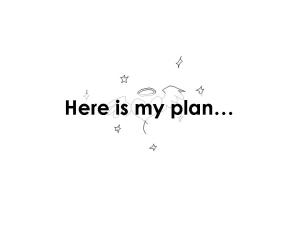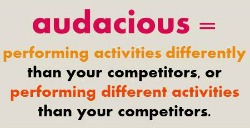Over the past semester, I engaged in what I expected to be a fruitless experiment in audacity. As my talented and clever roommates were sending resumes and cover letters to the McKinsey’s and IBM’s of the world, I decided to gamble with my future (because when else can you) and do something crazy.
It all started on LinkedIn. After spending an afternoon pimpin’ my profile (to be modest), I searched a company I had learned about over the summer in an space I care about, agtech startups. I found the CEO’s profile, looked it over, and was adequately impressed. Feeling the pressure to actively do something, I decided to go with the lowest-risk option I could think of. I sent this CEO a LinkedIn Message. Limited to 100 words, it read:
“I’m a huge fan of your companies and you in general. I study Science, Technology, and International Affairs at Georgetown University with a focus in Agriculture and Food Security and I’ve had the opportunity to work at a few different start-ups and love the pace. I would love the chance to work for you after graduation.”
Reading it over 10 minutes after hitting Send, I was embarrassed at how lame it sounded and I wished that I could take it back. At the least, I thought, that would be the end of it.
Until it wasn’t. Less than twelve hours later, the unthinkable happened. I got a response. And not a canned “Please leave me alone, creeper” response either – a kind, personal response. And an invitation to keep in touch. And a personal email address. And an invitation to a conference at Princeton where he was going to speaking. I was shocked. So shocked in fact, that I did the only appropriate thing I could think of. I bought a train ticket to Princeton. A few weeks later, I got the opportunity to meet this CEO in person, a personable man who oozed passion and who had a truly exciting product and vision and who, astoundingly, was curious to hear about me.
This experience opened the flood gates on an experiment that has been a wild, fulfilling, and meaningful ride. Since I sent that first LinkedIn message, I’ve sent approximately 70 cold emails to thought leaders (executives, writers, policy-makers, etc.) in my industry and beyond, and have been amazed by the results. I’ve gotten 32 direct, personal responses, from executives on two continents, in every time zone, from agtech startups to senior general council at SpaceX and the CTO of Monsanto. Most of these responses included offers for phone or in-person meetings and all were encouraging and kind. The experience and knowledge I’ve gained, not to mention the confidence, has been life-changing.
One of my most powerful experiences was one of the most spontaneous. When I learned (on Twitter of all places) that one of the executives I was most interested in meeting was going to be speaking at a MeetUp in NYC, I mentioned in my email that I would be attending and that I would enjoy the opportunity to meet and talk before. He agreed, and we picked a nearby Starbucks for our meeting. I pulled myself together as I made my way through Manhattan from the Megabus stop, and managed not to make a complete fool of myself (despite 8 hours on the bus for 4 hours in the city making for a rough day). What this execute hadn’t realized (“Did I forget to mention that?”) is that I had come up from DC just for this meeting. He was impressed enough by my audacity and hustle that he offered to introduce me to several companies he works with where he thought I might be a good fit. And then he offered me an internship. Without ever seeing my resume or my GPA, reading a cover letter or speaking to a reference.
For me, it’s safe to say that my experiment was a success, but I don’t think the most important take away was a job (thought it’s an outcome that no one (ie. me) is mad about). What I learned was that these people who I cared to know and who shared my interests, who had at some level reached the demi-God level of minor celebrity or at the very least, “too important for me” status, where actually, despite all evidence to the contrary, still normal people. Normal people who open emails, who can be compelled by a personal note, and who, at the end of the day, were kids in college once too. When I challenged the idea that these people were bigger, better, busier, or more important than me, my audacity and ingenuity become increasingly powerful, and I realized that being young and free, and genuinely caring about what I want to do really could matter.
When I tell people about my experience, the most common response is, “That’s great, but I haven’t figured out what I want to do, so how would I know who to contact.” Yes, having a specific interest makes narrowing the pool of potential contactees easier, but it’s not a requirement for exploring the Cold Email life. Because at the end of the day, this path is about exploration. I’ve talked to soil scientists and lawyers, product managers and economists, policy-makers and writers because I’m not sure what I want to do either. I may be interested in agtech 80% of the time, but I’m also interested in stand up comedy, creative non-fiction writing, clean energy policy, India, and astro-biology (to name just a few), and I’ve had the opportunity to talk to people in all these theaters. All I had to do was care enough to ask.
So for anyone out there who might be interested in going on an adventure and seeing where your passions take you instead of settling for security over what you care about, here are some tools that I’ve found useful in my quest.

Spokepoint: This website is vital, with a first name, last name, and a website domain, you can find anyone’s personal email address. Nothing says “committed” like “I somehow tracked down your unlisted personal email!”
Tracking list: My very low-tech tracking list is a word document with two columns: “Watch”, or people and companies that I haven’t contacted but might want to in the future and thus should periodically Google, and “Contacted”. I highlight names of people who reply to keep up with them. If people don’t get back to you right away, email them again. Best case, you show you care. Worst case, they’re still not going to respond. You can’t lose.
Publications: Unfortunately, the names of people you might want to contact won’t fall from the sky. But that’s okay, because you’re only going to contact people who you care about, so you’ll collect these names by reading/watching/attending things you care about, whether that’s the Times, Ted Talks, Twitter, a speaker event, or mostly in my case, industry specific blogs and publications. I check the publications on my list daily to weekly for articles and authors that interest me. Plus, “I just read your piece/the piece about you in X” is another great conversation starter.
Cajones (Courage): The first time an executive I wanted to meet asked to set up a call, I freaked out. I thought, “What would we possibly talk about? I’m just going to waste his time.” I froze and didn’t answer the email. I thought I burned a bridge. When I wrote to apologize, we set up another time, and when we talked on the phone, it was easy and casual, no pressure at all. We “millenials” get freaked out by phone calls, but trust me, people know that, and they’ll be impressed that you care enough to be uncomfortable.
Feel free to post a comment if you need some Cold Email inspiration. I’m always happy to send an example!
Good luck, fellow explorers!

[…] area. Be willing to travel a bit if it’s someone you’re dying to meet! Check out the experience of one of Georgetown’s own recent alums sending cold emails to people in her desired career […]